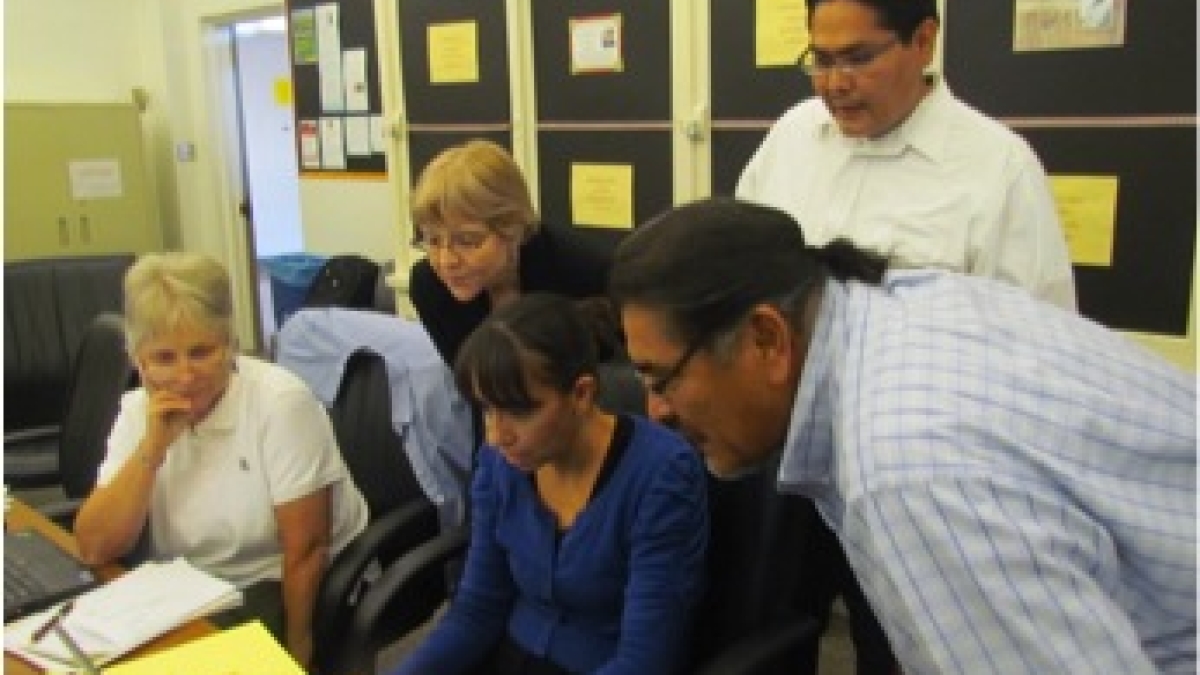American Indian Policy Institute conducts census workshop

Is the population of American Indians and Alaska Natives today in the United States 2.9 million? Or, is it 5.2 million?
The first U.S. Census was conducted in 1790, but American Indians were not included until 1860, and only 40,000 tribal individuals were counted due to federal policies and population loss. Much has changed, yet the question of an accurate population estimate remains elusive.
The American Indian Policy Institute at ASU is collaborating on the Tribal Indicators Project to carefully analyze and better understand the applied uses of U.S. Census data with American Indian Studies and the Center for Population Dynamics.
As part of the project, Amadeo Shije, U.S. Census Bureau Data Dissemination Specialist at the U.S. Census Bureau’s Denver Regional Office, recently visited the university to lead a census workshop. Tribal stakeholders for the Tribal Indicators Project, ASU graduate students, faculty and staff participated in the training.
“I shared an article about the American Indian Policy Institute’s Tribal Indicators Project and it generated a lot of interest at the Census Bureau. We realized that no other entity in the country has undertaken this type of project on tribal data. It was just what the Census Bureau needed to see because it makes the bureau's efforts worthwhile when American Community Survey data estimates are applied in important and unique ways,” Shije said.
The importance of the data is represented in the divergent population numbers. Based on methodological changes to the U.S. Census Bureau’s decennial survey, both 2.9 and 5.2 million are technically correct. Population estimates are based on the number of individuals who self-reported during the 2010 census as American Indian/Alaska Native “alone,” and those individuals plus those reporting as American Indian/Alaska Native “in combination” with another race.
“U.S. Census data is used to allocate over $400 billion dollars of federal funds annually, including funding that is critical to tribal nations and communities,” said Pat Mariella, director of the American Indian Policy Institute.
The 2000 census provided the first opportunity for U.S. citizens to self-identify as multi-racial. In 2005, the Census Bureau replaced the “long form,” used since 1940 to collect socio-economic data, with the American Community Survey in 2005. And the bureau’s powerful American FactFinder database available on the internet continues to grow in its uses and complexity, Mariella said.
The Tribal Indicators Project held its first stakeholders meeting earlier this year where Jennifer Glick, director of the Center for Population Dynamics, presented initial findings from work on a 1990-2010 cohort analysis designed to – among other things – quantify the change in the size of the American Indian/Alaska Native population that is not due to births, deaths or migration. This research is designed to suggest how much of the observed growth was due to a change in racial self-identification..
“Tribal stakeholders at the meeting were interested and supportive of this research and asked to continue to be involved in its progress. They also requested training to better understand and increase their use of U.S. Census data,” Mariella said.